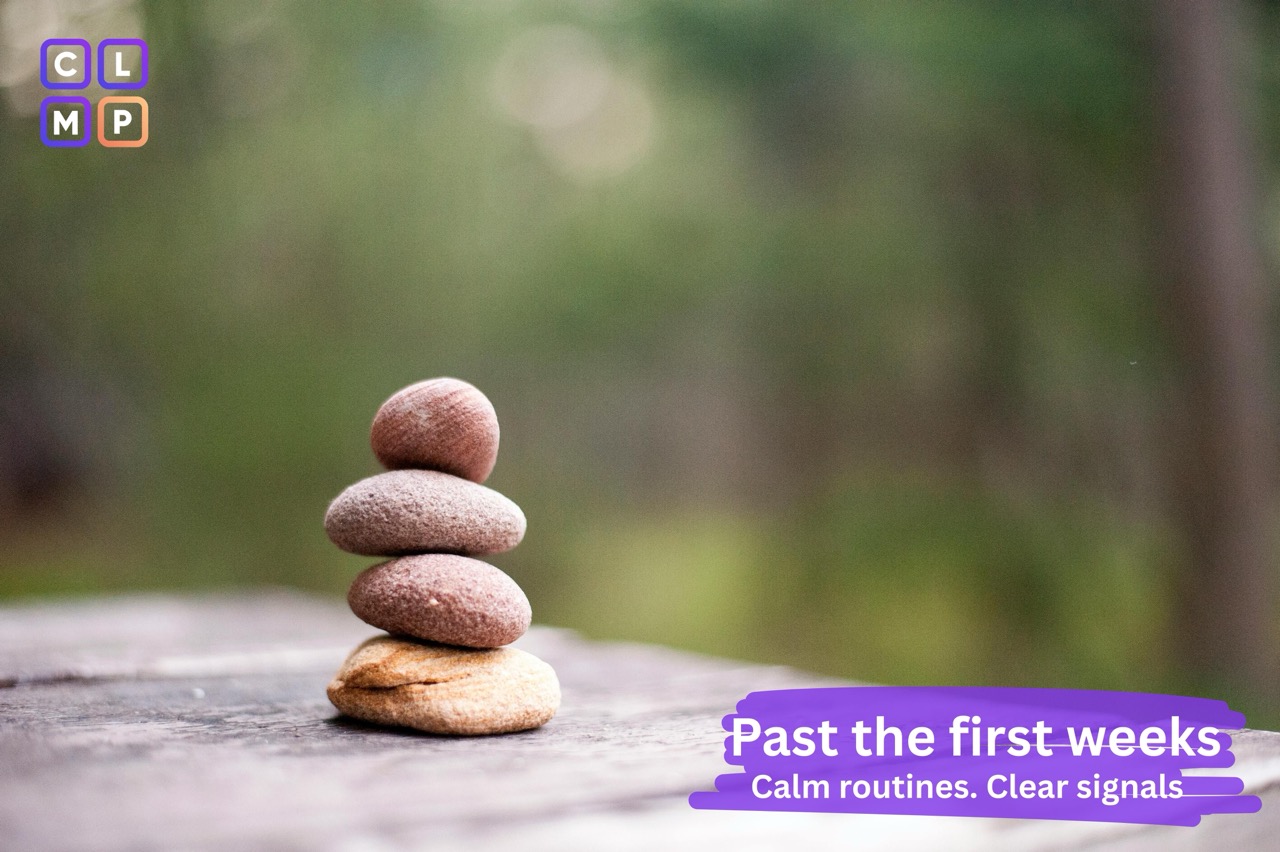Past the first weeks: From start anxiety to steady momentum
The toughest weeks are behind you
The first days bring timetables, names, seating shuffles, and a hundred micro-decisions. That start-of-term anxiety is real. But once the dust settles, usually by week 2–3, you have enough rhythm to switch from firefighting to fine-tuning. Patterns are visible. Routines stick. Students know the flow. This is the sweet spot to make small moves that pay off all year.
At CLMP(classmap.io), we focus on real-time class intelligence helping teachers see engagement, participation and mood signals during the lesson, not weeks later. This article shares simple, lightweight habits to turn that early chaos into steady momentum, plus how CLMP can shorten the distance between noticing and acting.

What teachers need right now (post‑start phase)
- Clarity over noise. Less data, more signal: Who’s engaged? Who’s drifting? Who’s persistently quiet?
- Stable routines. A predictable start/end flow reduces anxiety for you and your students.
- Fast feedback loops. Quick check-ins during class avoid slow, frustrating surprises later.
- Lightweight evidence. Notes you can trust—timestamped, simple, and usable in conversations with parents and colleagues.
5 tiny habits that change the week
These fit any classroom and take under 2 minutes each.
-
90-second “Vibe Check” at the start Students show how ready they feel (thumb scale, cards, or CLMP mood tap). You spot outliers early.
-
Participation Pulse mid‑lesson Mark 2–3 quick notes (active, passive, distracted, persistent). Over time, patterns emerge without heavy logging.
-
Micro‑adjust the seating (when needed) Swap one pair or move a student closer to focus. Tiny changes, big gains.
-
End‑of‑lesson exit note Ask one prompt: “What felt clear? What’s still fuzzy?” Log a single class note for tomorrow.
-
Friday 10‑minute review Look at the week’s engagement/participation trend. Choose one nudge for next week. That’s it.
If you’re using CLMP, each habit is one or two taps. No cameras, no microphones, just teacher observations turned into signals.
How CLMP helps in this phase
-
Live Signals: Engagement, participation, and mood as you teach, so you can act in‑lesson.
-
Instant Reports: Auto‑generated summaries for students and classes to support feedback, SEN notes, or parent comms.
-
Smart Seating (teacher‑in‑control): AI suggests balanced seating to reduce distractions and support peer help; you confirm or tweak in a couple of clicks.
-
Privacy‑first, teacher‑input only: No hidden scores, no surveillance. Just clear timestamps of who/what/when you observed.
-
Weekly & end‑session alerts (coming up): Gentle nudges highlighting who might need attention, based on consistent patterns—not one‑off moments.
A simple 4‑week playbook (post‑start)
Week 1: Stabilize the routine
- Lock in your start/end structure (vibe check + exit note).
- Use one participation marker daily (e.g., “active” or “persistent”).
- Try one micro‑seating change mid‑week.
Week 2: Spot the quiet signals
- Filter for persistently passive students; plan a specific prompt or role for them.
- Add one low‑stakes contribution format (think-pair-share, whiteboards).
- Note any mood shifts before/after breaks.
Week 3: Reduce friction
- Standardize transitions (timer or visual).
- Use CLMP’s instant class report to prep a 5‑minute department/HoY sync.
- Adjust seating to support a peer helper model where needed.
Week 4: Consolidate & communicate
- Review the 4‑week trend: engagement highs/lows, participation balance, mood hotspots.
- Share 2–3 evidence‑based observations with parents or colleagues.
- Set one goal for the next month (e.g., “lift persistent engagement for X by 15%”).
For school leaders: signals that matter now
- On‑time settling: Are lessons reaching workable calm in the first 5 minutes more consistently than week 1? Participation balance: Are 4–6 students carrying the room, or is contribution broadening?
- Mood hotspots: Any year groups, periods, or rooms that trend lower mood—indicating timetable or environment tweaks?
- Consistency across classes: Do students flagged as persistently passive appear across multiple subjects (systemic), or only in one (contextual)?
With CLMP’s school‑level view (weekly/daily), leaders get a privacy‑safe picture of where support helps most, without asking teachers for extra reports.
Why this works
Small, consistent routines decrease cognitive load and build trust. When teachers see clear signals in the moment, not weeks later—they can adjust before small issues harden into habits. When leaders see patterns across classes, support gets targeted and fair.
Final thought
The start‑of‑term nerves fade. What stays is the craft. A few steady habits and signals you can trust, create calmer rooms and quicker support. If you’d like those signals without extra admin, CLMP turns your quick notes into live insights and instant reports. That’s it.
Want to see how it feels in your classroom? Start with a single class and these five habits—then decide if CLMP fits your flow.
Sources used:
- Madeline Will (2022). How to Shake the ‘October Blues’ and Rediscover the Joy in Teaching. Education Week.
- Audra Lynam (2024). The Emotional Roller Coaster of the First Years of Teaching. Edutopia.
- Responsive Classroom. The First Six Weeks of School.
- Australian Education Research Organisation (2023). Teaching routines: Their role in classroom management.
- Dosil Santamaría, M. et al. (2021). Teacher stress, anxiety and depression at the beginning of the academic year during COVID-19. Global Mental Health.